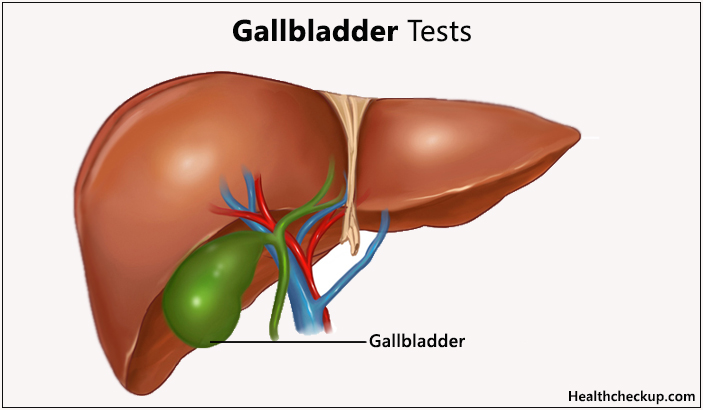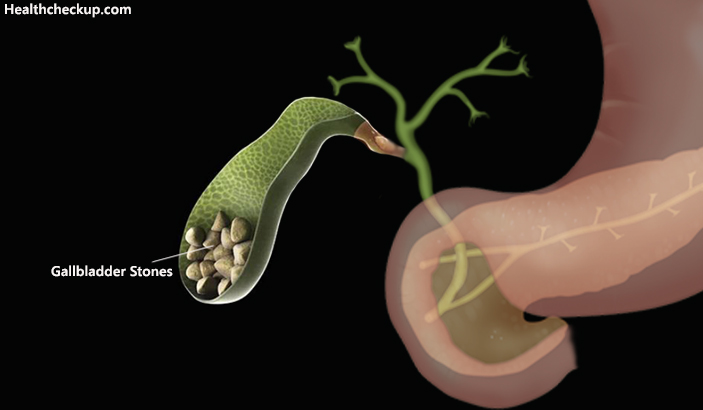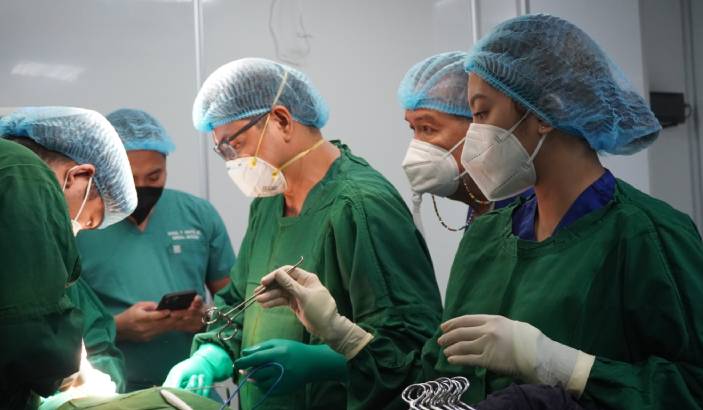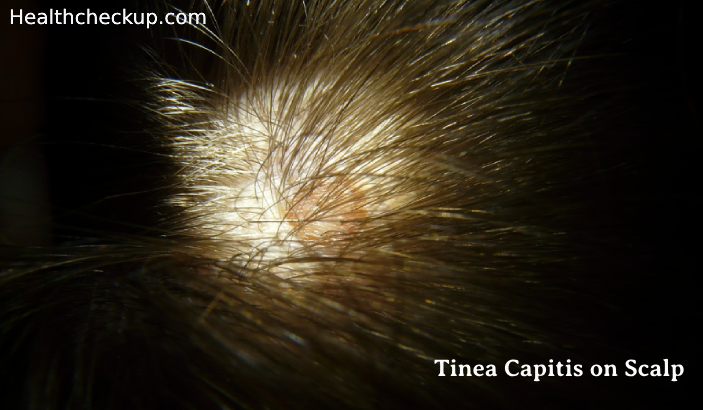The gallbladder is a sac that is located near the liver, and it serves as a storage space for bile; the gallbladder is susceptible to various conditions such as inflammation, called cholecystitis, gallbladder cancer, gallbladder stones, and many other disease conditions for which a gallbladder test may be required to diagnose the exact problem affecting the gall bladder.
Gallbladder disease is the term that is used to describe a wide range of disorders that can affect the gallbladder, and it is important to know that many of the gallbladder diseases show no symptoms in the person suffering from the disease. For example, up to 90% of the patients with gallstones show no symptoms, but if the problem is not addressed earlier on and the gallbladder remains to be blocked by the gallstones, the organ might develop an infection that may cause severe disease in a person.
Gallbladder Disease: When is a Diagnostic Gallbladder Test Performed?
As mentioned earlier, gallbladder diseases are silent diseases that show no symptoms, but a doctor may order a gallbladder test if you experience one or more of these symptoms. These symptoms are warning signs for the disease of the gallbladder:
- Bouts of acute pain in the upper right abdomen, that might sometimes be felt in the right chest or the back
- Pain that appears after eating high-fat foods, especially at night
- Fever with chills that is often accompanied by abdominal pain
- Nausea along with vomiting
- Indigestion and heartburn
- Excess gas and a feeling of fullness all the time
Most often, a gallbladder disease is accidentally detected while performing diagnostic tests for some other symptoms or health conditions.
Tests for Gallbladder Function
As mentioned earlier, the gallbladder stores bile, but it does not produce it. The liver produces bile, and the bile juice then flows through the bile ducts into the gallbladder. The gallbladder stores the bile that is not being used currently by the body, and it releases the after a meal when the small intestine secretes a hormone called cholecystokinin. The bile then flows into the small intestine and helps in the breakdown of the fats present in the food that you just ate.
The HepatobiliaryIIminoDiacetic Acid (HIDA) scan is considered the gold standard for testing the gallbladder function. It is an imaging procedure that is used to diagnose any diseases of the liver, the bile ducts, and the gall bladder.
The HIDA scan is also known as cholescintigraphy, and in this test, a radioactive tracer called hydroxyiminodiacetic acid (HIDA) is injected into a vein in the arm of the patient. The tracer then travels through the bloodstream into the liver, where the cells that produce bile take up the tracer. The tracer then travels along with the bile into the gallbladder and through the bile ducts into the small intestine.
A nuclear medicine scanner called the gamma camera is used in this test to track the flow of the tracer from the liver into the gall bladder and then into the small intestine.
The HIDA scan is a gallbladder test done to evaluate its function, and it is used as a part of a test to measure the rate at which bile is released from the gallbladder. This is called the gallbladder ejection fraction. The normal ejection fraction is considered to be about 33% to 40%. This is the normal range for the gallbladder function test.
Your doctor will explain the test results to you, and take the decision on the line of treatment necessary if there is any abnormality in the gallbladder function. You might also be given some dietary guidelines to follow.
Tests for Gallbladder Stones
Gallstones are small stones that are usually made of cholesterol and form in the gallbladder or in the bile ducts. Cholesterol gallstones happen more frequently in females and are normally associated with obesity, pregnancy, and in general with oral hormonal therapy, rapid weight loss, elevated triglyceride levels in blood, and Crohn’s disease.
There are two other types of gallstones called the black pigment gallstones and brown pigment gallstones. The former occur when there is an increased destruction of red blood cells in the body, and the latter occur when there is reduced flow and infection of the bile juice.
In most cases, gallstones do not trigger any symptoms and do not need any treatment. However, sometimes they may lead to the inflammation of the gallbladder, called cholecystitis. When gallstones cause symptoms and complications, the condition is known as cholelithiasis.
Here are some of the Diagnostic Procedures used to Detect Gallstones:
-
Abdominal Ultrasound:
This is the most common gallbladder test used by doctors to detect gallstones. The abdominal ultrasound scan sometimes also reveals gallstones present in the bile ducts.
-
The Gallbladder Scan:
If you have symptoms of gallstones, and an abdominal scan does not reveal any abnormalities, your doctor may order a gallbladder scan to help detect gallstones that were not seen in the ultrasound scan. In this test, a special radioactive dye is injected into a vein in the arm, and images of the gallbladder are taken to evaluate the functioning of the gallbladder and also recognize any gallstones that may be blocking the bile ducts.
-
Endoscopic Retrograde Cholangiopancreatogram (ERCP):
This test is used to detect any gallstones that may be present in one of the ducts that connect the liver with the gallbladder, the pancreas, and the small intestine. In this test, an endoscope, a flexible, lighted viewing instrument, is pushed down the throat and through the stomach to inspect the tubes that drain the liver, gallbladder, and the pancreas. If a gallstone is found blocking any of these tubes, the doctor can instantly remove the gallstone using instruments inserted through the endoscope.
-
Endoscopic Ultrasound:
This test is similar to ERCP and is used to detect gallstones in the common bile duct.
-
Magnetic Resonance Cholangiogram (MRC):
This test helps provide images of the organs and structures inside the abdomen, and doctors use MRC to locate gallstones before performing a surgery to remove the gall bladder and/or to detect any complications in the bile duct or gallbladder.
-
Blood tests and Liver Function Tests:
Blood tests such as a complete blood count(CBC) and liver function tests are used by doctors to evaluate symptoms of abdominal pain that they suspect to be caused by gallstones. They also help the doctor decide whether your symptoms are being caused by conditions other than gallstones.
Tests for Gallbladder Cancer
Gallbladder cancer symptoms are similar to those of all other gallbladder diseases, and in most cases, early stage gallbladder cancer is detected accidentally while the patient is undergoing an operation to remove gallstones or when tests are being conducted to check for gallbladder inflammation. The diagnosis of gallbladder cancer involves a detailed assessment of medical history including checking for previous history of gallstones, cholescystitis, and any family history of gallbladder disease and a thorough physical examination to check for the enlargement of the gallbladder by paplaption of the right upper part of the abdomen and the lymph nodes in this part of the body, and checking for signs of jaundice that includes the yellowing of the skin, nail beds, and eyes.
The Diagnostic Tests for Gallbladder Include:
-
Liver Function Tests:
These are blood tests done to evaluate the normal functioning of the liver and calculate the levels of bilirubin and the enzymes such as aspartate transaminase (AST) and alanine transaminase (ALT), produced by the liver, in the blood. High levels of bilirubin and these enzymes in the blood indicate abnormalities of the biliary system, the gallbladder, and the liver, including gallbladder cancer. Further tests will be required to diagnose gall bladder cancer.
-
Abdominal Ultrasound:
This is a painless test that uses ultrasound waves to present images of the organs in the abdomen. An ultrasound scan of the abdomen can detect tumors of the gallbladder and any abnormalities of the liver.
-
CT scan of the Abdomen:
A computerized tomography scan uses highly-amplified X-rays to create 3-dimensional picture of the insides of the abdomen, and can be helpful in detecting gallbladder cancer. It also helps in measuring the size of the tumor in the gallbladder and aids in checking if the cancer has spread to the nearby organs.
-
Endoscopic Retrograde Cholangiopancreatogram (ERCP):
This test helps detect any narrowing or blockage in the bile duct or the pancreatic duct caused by a tumor. It allows doctors to take samples of any abnormal areas, which will then be subjected to microscopic examination in the lab to detect cancer cells. This gallbladder test will help the doctor decide if the gallbladder has to be removed surgically.
-
Biopsy:
In this test, a sample of gallbladder tissue is removed through laparoscopy or during an ERCP and is examined under a microscope. Biopsy is done when the doctor has diagnosed a gallbladder cancer through any of the above mentioned gallbladder test and it is the most certain way to detect a cancer of the gallbladder and helps in evaluating the extent to which the cancer has advanced.
Tests for Gallbladder Inflammation
Cholecystitis is the medical term used to describe an inflammation of the gallbladder. Acute cholecystitis is mostly caused by gallstones and presents with fever, nausea, vomiting, and jaundice. Chronic cholecystitis develops slowly over time, and it occurs after several attacks of acute cholecystitis and may cause the gallbladder to shrink and reduce its ability to store and release bile.
The diagnostic tests for cholecystitis are the same as the tests for other gallbladder disease, and they include:
- Ultrasound of the Abdomen: This gallbladder test helps detect gallstones and evaluate the condition of the gallbladder, including any inflammation.
- Blood Test: An increase in the white blood cell count suggests an infection that might be causing a gallbladder inflammation. Increased levels of bilirubin, alkaline phosphatase, and serum aminotransferase may also help the doctor make a diagnosis of cholecystitis.
- CT scan of the Abdomen: The images obtained from the scan may reveal the signs of cholecystitis.
- Hepatobiliary Iminodiacetic Acid (HIDA) Scan: As mentioned earlier, this test evaluates the functioning of the liver, the gallbladder, the biliary tract, and the small intestine, and it helps in the diagnosis of cholecystitis.
Tests for Gallbladder Sludge
As mentioned earlier, the gall bladder mainly functions to store bile and release it into the small intestine to aid in digestion. In case the gall bladder does not empty the bile completely, the particles in the bile, such as cholesterol or calcium salts thickenas a result of remaining in the gallbladder for too long. This thickening of the bile particles is called biliary sludge and is commonly called gallbladder sludge.
The tests for Gallbladder Sludge Include:
- Ultrasound Scan of the Abdomen: An ultrasound scan of the abdomen is usually enough to diagnose gallbladder sludge.
Once an ultrasound scan shows gallbladder sludge, the doctor may order a few tests to determine the cause of the gallbladder sludge, and these include:
- Blood Tests: A blood test helps determine the cholesterol and sodium levels in the blood, and other blood tests may be done to ensure that the liver is functioning properly.
- CT Scan: A CT scan of the abdomen will also help in the diagnosis of gallbladder sludge.
Gallbladder sludge is not an illness in itself, but it may provide clues to more serious illnesses or sometimes, give rise to gallstones. Taking the right treatment from a skilled doctor may help people live long and healthy lives.
Medically Reviewed By

I am an experienced Medical/Scientific writer with a passion for helping people live a happy healthy life. My thirst for writing has followed me throughout the years – it is there when I wake up, lingering at the edges of my consciousness during the day, and teases me at night as I go to sleep.









